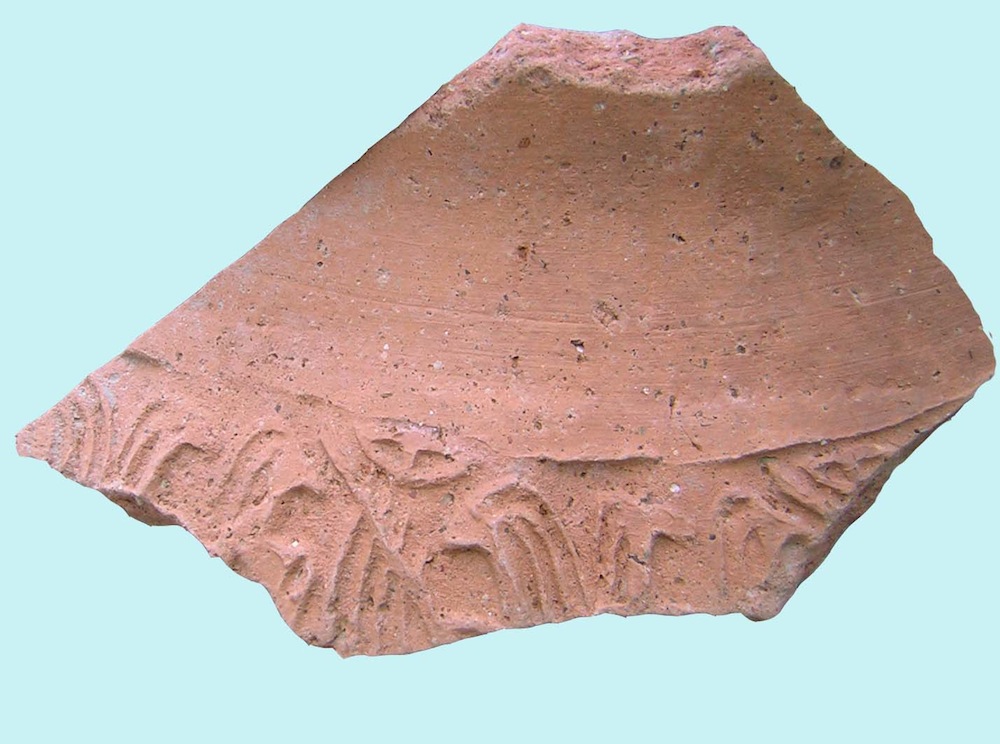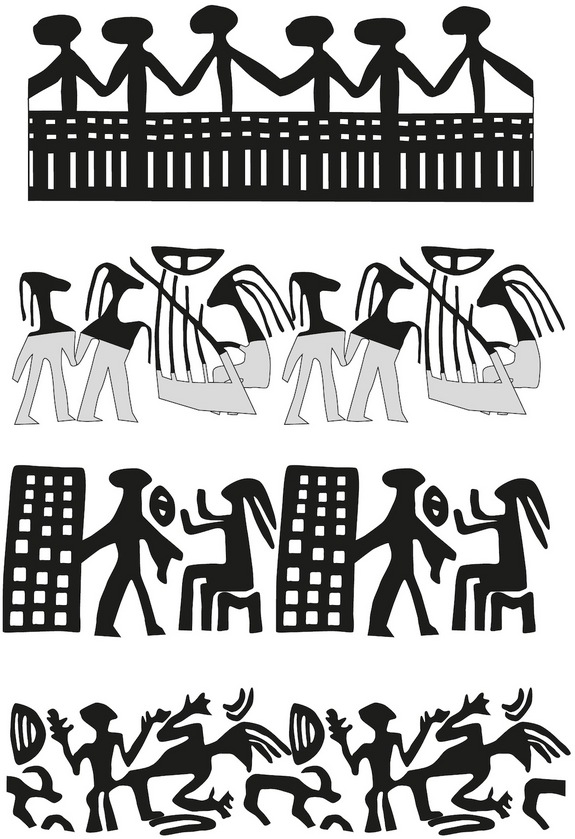
An ancient seal unearthed in northern Israel may depict a woman playing a musical instrument during a sacred marriage rite between a king and a goddess. The mysterious seal, which decorates a shard of a 5,000-year-old clay storage vessel, could be the oldest known depiction of a musical performance in Israel, archaeologists say.
"This is the first time it is definitely possible to identify a figure playing an instrument on a seal impression from the third millennium B.C.," the researchers said in a statement. The researchers will present their findings in Israel today (May 28) at a symposium called Sex, Drugs & Rock N' Roll.
The fragment of the clay pot was first unearthed in the 1970s by archaeologist Rafi Frankel and his colleagues at a site in Galilee known as Bet Ha-‘Emeq. The seal was made by rolling a stamp across wet clay to create a recurring motif, then firing the clay to bake in the design. [The 7 Most Mysterious Archaeological Finds on Earth]
The scene shows three women, one of whom is seated and is playing a lyre, an ancient musical instrument that resembles a harp. Other seals unearthed at the Bet Ha-'Emeq site show only simple geometric designs, Haaretz reported.
Though the object has been around since the 1970s, the researchers didn't realize that the image depicted a lyre until Yitzhak Paz, Ianir Milevski and Nimrod Getzov, researchers with the Israel Antiquities Authority, took a second look in recent years. The team compared the image to the remains of ancient Mesopotamian lyres, as well as other art depicting lyres from the time, Paz told Haaretz. The team then recreated the complete scene.

In a sacred marriage, a king was symbolically married to a goddess (whose earthly stand-in would have been a cultic priestess). The tradition involved music and feasting, and later, sexual congress between the "goddess" and the king.
Bronze Age art sometimes shows scenes of revelry, and this type of man-god marriage, which may have occurred in a carnival-like festival, was depicted in at least six other cylindrical seals from the time period, according to an article in the book "Eretz Israel: Archaeological, Geographical and Historical Studies," (Israel Exploration Society, 2011).
Get the world’s most fascinating discoveries delivered straight to your inbox.
"This is when most of the cultic impressions from Israel depict dancing figures or the feasting scene in which the female and male figures are shown facing each other, in the rite just before their sexual encounter," the researchers said.
The ancient stamp may illustrate the musical portion of this ritual, the researchers said.
But though the lyre may be the oldest representation of music found in Israel, it's not the oldest in the entire region, said Pierre de Miroschedji, an archaeologist at the CNRS, the French National Centre for Scientific Research, who was not involved in the study.
"This, of course, is not the first example," de Miroschedji told Live Science in an email. "There are other examples in Mesopotamia and Syria."
In addition, the scene may not show musical performance at all, de Miroschedji said.
"The impression from Tel Bet Ha-'Emeq does not show someone playing a lyre. It shows a lyre in the field, and this is an evocation of musicians," de Miroschedji said.
Follow Tia Ghose on Twitter and Google+. Follow Live Science @livescience, Facebook & Google+. Originally published on Live Science.

Tia is the managing editor and was previously a senior writer for Live Science. Her work has appeared in Scientific American, Wired.com and other outlets. She holds a master's degree in bioengineering from the University of Washington, a graduate certificate in science writing from UC Santa Cruz and a bachelor's degree in mechanical engineering from the University of Texas at Austin. Tia was part of a team at the Milwaukee Journal Sentinel that published the Empty Cradles series on preterm births, which won multiple awards, including the 2012 Casey Medal for Meritorious Journalism.
